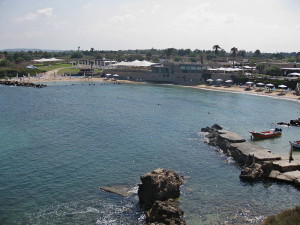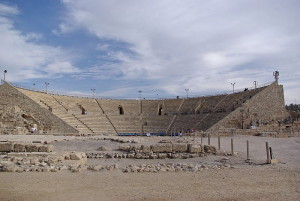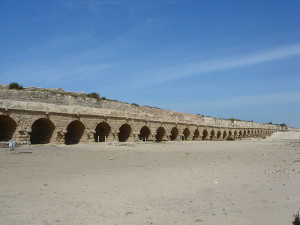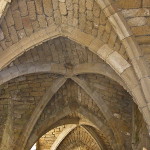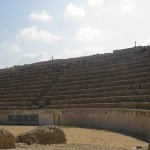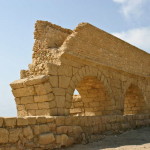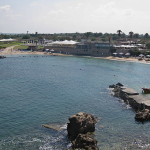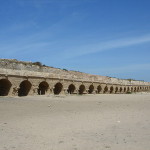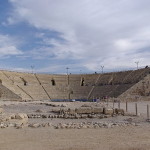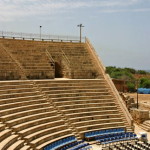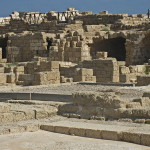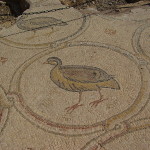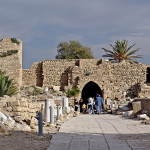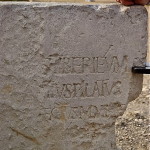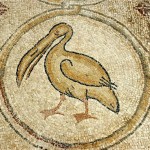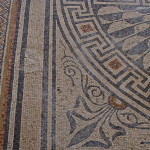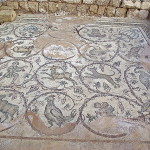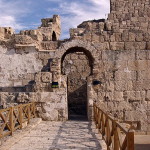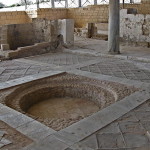Israel
In the attractive Mediterranean seaport of Caesarea Maritima, the apostle Peter baptised the first recorded gentile convert to Christianity — Cornelius, a centurion in the Roman army.
When this Italian soldier and his household believed in Jesus they received the gift of the Holy Spirit and began speaking in tongues. This event astonished the Jewish Christians but validated the fact that salvation was for all people (Acts 10).
Caesarea Maritima (“by the sea”) was the scene of other significant events for Christians:
• It was the headquarters of Pontius Pilate. From here the Roman procurator set out for the Passover festival in Jerusalem, where he sentenced Jesus to death.
• Here the apostle Paul was imprisoned for two years and preached to the last of the Herods, King Agrippa II, who said that if he were to listen any longer to Paul’s persuasion he might become a Christian.
• The city was the home of Philip the evangelist and his four daughters, who were prophetesses. Paul stayed with them when he returned from his missionary journeys.
• At Philip’s home, a prophet named Agabus bound Paul’s hands and feet with his belt, foretelling how the apostle would be handed over to the Romans.
• After Jerusalem was destroyed, Caesarea became the centre of Christianity in Palestine. A Church council held here in AD 195 determined that Easter should be celebrated on a Sunday.
Founded by Herod the Great
Caesarea — not to be confused with Caesarea Philippi in Galilee – was founded by Herod the Great on the site of an ancient fortified town. In 22 BC, with no expense spared, he began building a new city and harbour.
Massive breakwaters gave safe anchorage to 300 ships, a sewage system was flushed by the tide, and a vast hippodrome seated more than 20,000 people at chariot races. Later an amphitheatre was built to present chariot races, gladiatorial combats, animal performances and theatrical events. Little wonder that Caesarea has been dubbed “Vegas on the Med.”
During the Roman occupation, clashes between Jews and the majority Greco-Syrian population, who supported Rome, were frequent.
The desecration of Caesarea’s synagogue and the massacre of 20,000 Jews — in a single hour, according to the historian Josephus — culminated in the First Jewish Revolt, which ended with the AD 70 destruction of both Jerusalem and the Second Temple.
Bishop’s territory included Jerusalem
Christianity was accepted early in Caesarea. By the end of the 2nd century the city had a bishop, Theophilus of Caesarea, whose territory included Jerusalem.
Well-known Christian Fathers who were active in Caesarea included Origen and Pamphilius. The library they built up was second only to that of Alexandria (in the 7th century it held 30,000 works).
Eusebius, who became bishop in 314, was both the first Church historian and the first biblical geographer. Without his book of place names, the Onomasticon, many biblical sites would never have been identified.
Cathedral was never completed
Today’s visitors can see a restored Roman theatre built to accommodate 4000 and a Roman aqueduct that brought water from the foothills of Mount Carmel.
Just inside the theatre is a replica of an inscription carved in stone, bearing the name of Pontius Pilate.
The remains of a Crusader walled city, from the 13th century, include a cathedral which was never completed because the vaults below, from an earlier period, were unable to bear the weight.
A severe storm in December 2010 damaged several archaeological sites, including parts of the Crusader city wall and the Herodian wall. A breakwater built in the 1950s to protect the port was smashed into three pieces.
In Scripture:
Philip arrives in Caesarea: Acts 8:40
Agabus prophesies Paul’s death: Acts 21:8-11
Peter visits Cornelius: Acts 10
God strikes down Herod Agrippa I: Acts 12:21-23
Paul is imprisoned in Caesarea: Acts 23:23—26:32
- Inside the city walls at Caesarea (© Deror Avi)
- Roman hippodrome at Caesarea (© Deror Avi)
- Roman aquaduct at Caesarea (David Niblack)
- Harbour at Caesarea (© Deror Avi)
- Roman aquaduct that brought water from Mount Carmel to Caesarea
- Restored amphitheatre at Caesarea (Berthold Werner)
- Tiered seating in Roman amphitheatre at Caesarea (David Niblack)
- Remains of warehouses at Caesarea (© Deror Avi)
- Mosaic of partridge at Caesarea (Avishai Teicher)
- Crusaders’ city gate at Caesarea (Berthold Werner)
- Stone with engraving of Pontius Pilate’s name (Berthold Werner)
- Mosaic of pelican at Caesarea (© Israel Ministry of Tourism)
- Mosaic in the Roman gymnasium at Caesarea (© Deror Avi)
- Floor mosaic at Caesarea (Berthold Werner)
- Ruins of Roman amphitheatre at Caesarea (Berthold Werner)
- Roman hot pool and gymnasium at Caesarea (© Deror Avi)
References
Brownrigg, Ronald: Come, See the Place: A Pilgrim Guide to the Holy Land (Hodder and Stoughton, 1985)
Charlesworth, James H.: The Millennium Guide for Pilgrims to the Holy Land (BIBAL Press, 2000)
Freeman-Grenville, G. S. P.: The Holy Land: A Pilgrim’s Guide to Israel, Jordan and the Sinai (Continuum Publishing, 1996)
Gonen, Rivka: Biblical Holy Places: An illustrated guide (Collier Macmillan, 1987)
Joseph, Frederick: “Caesarea”, Holy Land, winter 2004
Murphy-O’Connor, Jerome: The Holy Land: An Oxford Archaeological Guide from Earliest Times to 1700 (Oxford University Press, 2005)
Porath, Yosef: “Caesarea: Herod and Beyond: Vegas on the Med.”, Biblical Archaeology Review, September/October 2004
Wareham, Norman, and Gill, Jill: Every Pilgrim’s Guide to the Holy Land (Canterbury Press, 1996)
External links

